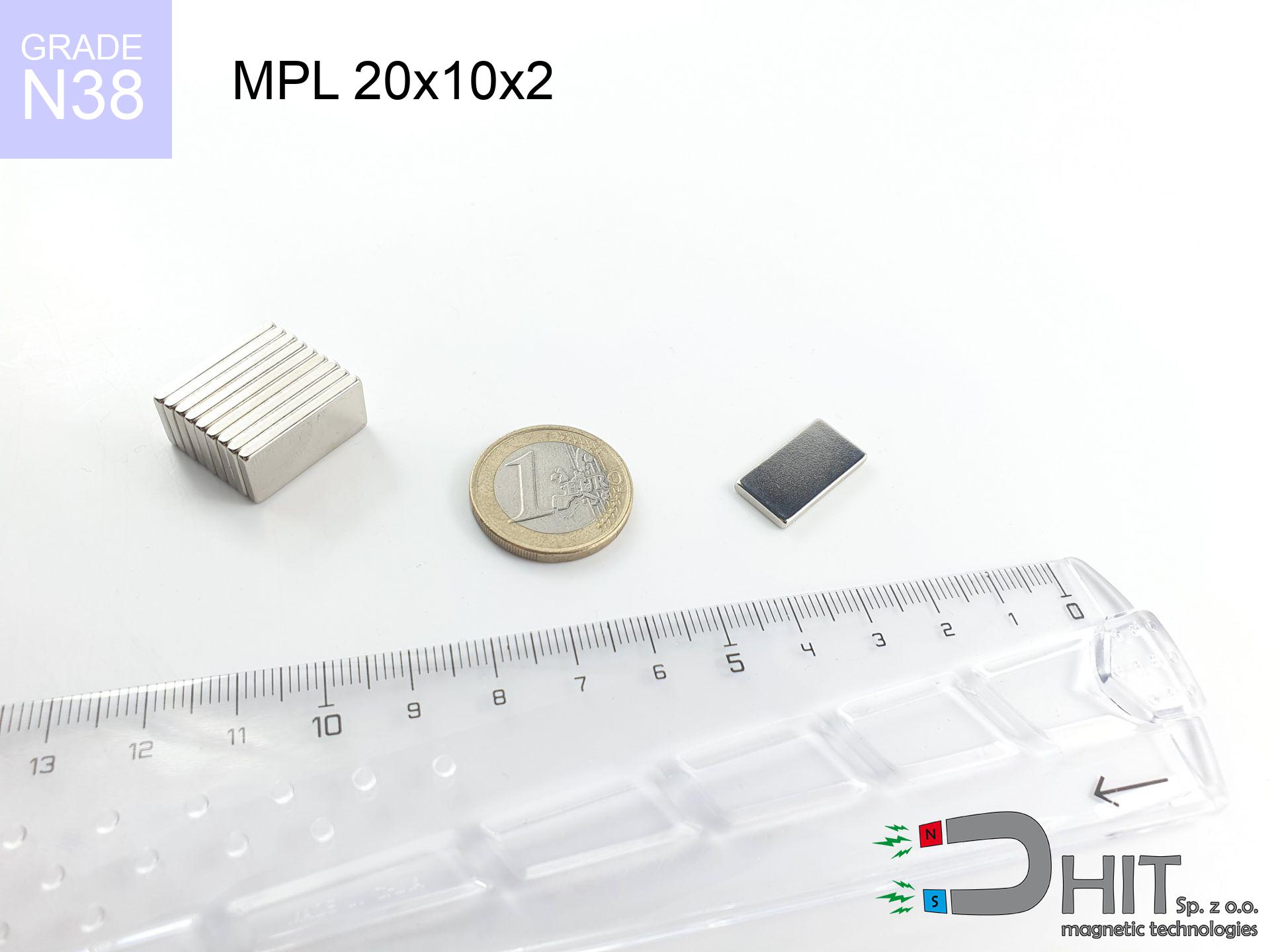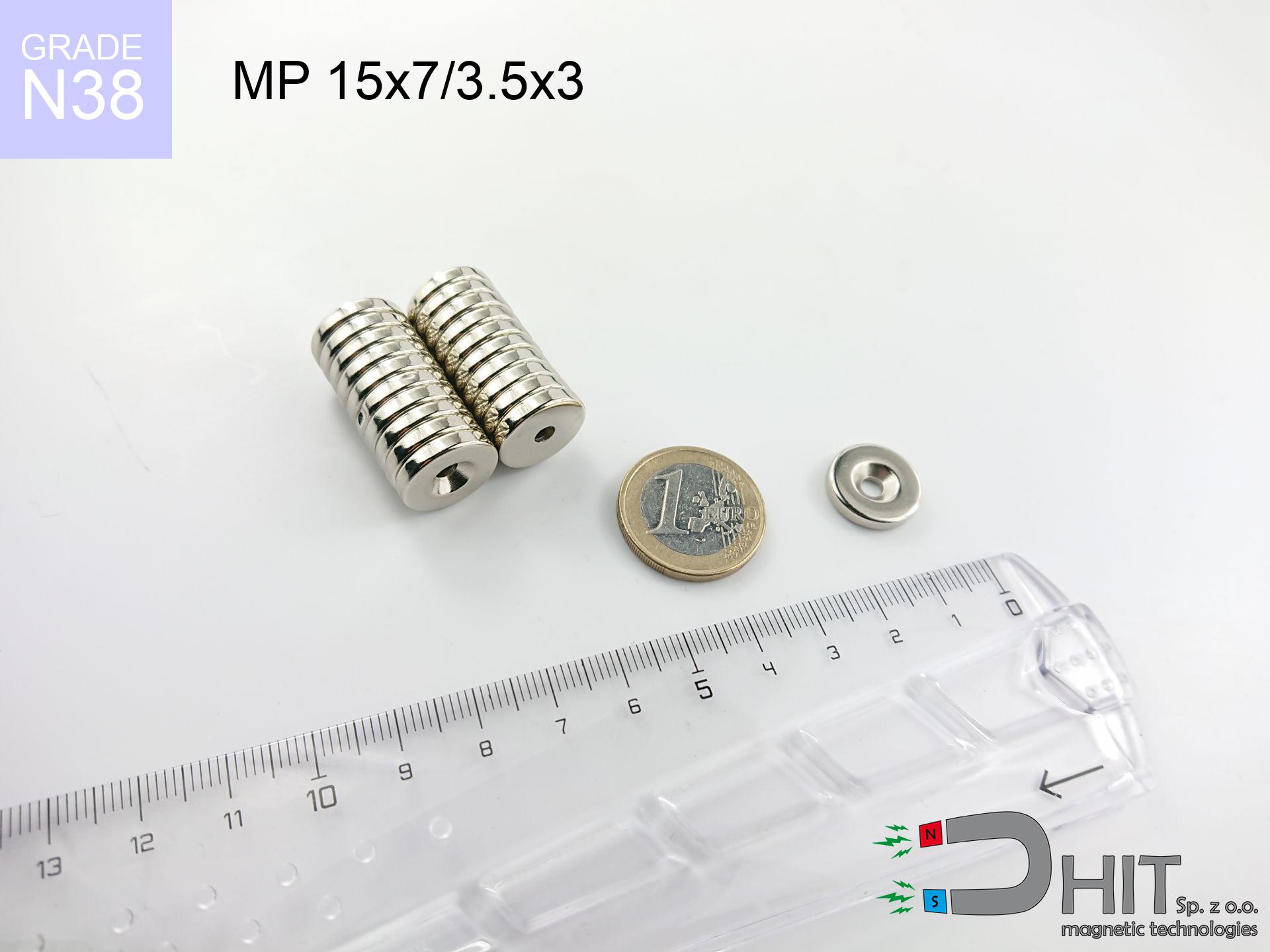SM 25x325 [2xM8] / N42 - magnetic separator
magnetic separator
Catalog no 130349
GTIN/EAN: 5906301812975
Diameter Ø
25 mm [±1 mm]
Height
325 mm [±1 mm]
Weight
1260 g
Magnetic Flux
~ 6 500 Gauss [±5%]
910.20 ZŁ with VAT / pcs + price for transport
740.00 ZŁ net + 23% VAT / pcs
bulk discounts:
Need more?
Call us now
+48 22 499 98 98
if you prefer drop us a message by means of
contact form
the contact section.
Lifting power and appearance of neodymium magnets can be reviewed on our
magnetic mass calculator.
Same-day processing for orders placed before 14:00.
Detailed specification - SM 25x325 [2xM8] / N42 - magnetic separator
Specification / characteristics - SM 25x325 [2xM8] / N42 - magnetic separator
| properties | values |
|---|---|
| Cat. no. | 130349 |
| GTIN/EAN | 5906301812975 |
| Production/Distribution | Dhit sp. z o.o. |
| Country of origin | Poland / China / Germany |
| Customs code | 85059029 |
| Diameter Ø | 25 mm [±1 mm] |
| Height | 325 mm [±1 mm] |
| Weight | 1260 g |
| Material Type | Stainless steel AISI 304 / A2 |
| Magnetic Flux | ~ 6 500 Gauss [±5%] |
| Size/Mount Quantity | 2xM8 |
| Polarity | circumferential - 12 poles |
| Casing Tube Thickness | 1 mm |
| Manufacturing Tolerance | ±1 mm |
Magnetic properties of material N42
| properties | values | units |
|---|---|---|
| remenance Br [min. - max.] ? | 12.9-13.2 | kGs |
| remenance Br [min. - max.] ? | 1290-1320 | mT |
| coercivity bHc ? | 10.8-12.0 | kOe |
| coercivity bHc ? | 860-955 | kA/m |
| actual internal force iHc | ≥ 12 | kOe |
| actual internal force iHc | ≥ 955 | kA/m |
| energy density [min. - max.] ? | 40-42 | BH max MGOe |
| energy density [min. - max.] ? | 318-334 | BH max KJ/m |
| max. temperature ? | ≤ 80 | °C |
Physical properties of sintered neodymium magnets Nd2Fe14B at 20°C
| properties | values | units |
|---|---|---|
| Vickers hardness | ≥550 | Hv |
| Density | ≥7.4 | g/cm3 |
| Curie Temperature TC | 312 - 380 | °C |
| Curie Temperature TF | 593 - 716 | °F |
| Specific resistance | 150 | μΩ⋅cm |
| Bending strength | 250 | MPa |
| Compressive strength | 1000~1100 | MPa |
| Thermal expansion parallel (∥) to orientation (M) | (3-4) x 10-6 | °C-1 |
| Thermal expansion perpendicular (⊥) to orientation (M) | -(1-3) x 10-6 | °C-1 |
| Young's modulus | 1.7 x 104 | kg/mm² |
Table 1: Rod construction
SM 25x325 [2xM8] / N42
| Parameter | Value | Description / Unit |
|---|---|---|
| Diameter (Ø) | 25 | mm |
| Total length | 325 | mm (L) |
| Active length | 289 | mm |
| Section count | 12 | modules |
| Dead zone | 36 | mm (2x 18mm starter) |
| Weight (est.) | ~1212 | g |
| Active area | 227 | cm² (Area) |
| Housing material | AISI 304 | 1.4301 (Inox) |
| Surface finish | Ra < 0.8 µm | Polished |
| Temp. class | 80°C | Standard (N) |
| Force loss (at max °C) | -12.8% | Reversible loss (physics) |
| Force (calculated) | 10.6 | kg (theor.) |
| Induction (surface) | ~6 500 | Gauss (Max) |
Chart 2: Field profile (12 sections)
Chart 3: Temperature performance
Chemical composition
| iron (Fe) | 64% – 68% |
| neodymium (Nd) | 29% – 32% |
| boron (B) | 1.1% – 1.2% |
| dysprosium (Dy) | 0.5% – 2.0% |
| coating (Ni-Cu-Ni) | < 0.05% |
Environmental data
| recyclability (EoL) | 100% |
| recycled raw materials | ~10% (pre-cons) |
| carbon footprint | low / zredukowany |
| waste code (EWC) | 16 02 16 |
Other proposals
Pros and cons of neodymium magnets.
Benefits
- They do not lose magnetism, even over approximately 10 years – the reduction in strength is only ~1% (based on measurements),
- Magnets very well defend themselves against loss of magnetization caused by external fields,
- By covering with a lustrous layer of gold, the element has an modern look,
- The surface of neodymium magnets generates a unique magnetic field – this is a distinguishing feature,
- Due to their durability and thermal resistance, neodymium magnets can operate (depending on the shape) even at high temperatures reaching 230°C or more...
- In view of the option of accurate forming and customization to individualized solutions, magnetic components can be created in a wide range of forms and dimensions, which expands the range of possible applications,
- Fundamental importance in future technologies – they are utilized in mass storage devices, brushless drives, diagnostic systems, also complex engineering applications.
- Thanks to their power density, small magnets offer high operating force, with minimal size,
Limitations
- To avoid cracks under impact, we recommend using special steel housings. Such a solution protects the magnet and simultaneously improves its durability.
- Neodymium magnets lose their power under the influence of heating. As soon as 80°C is exceeded, many of them start losing their force. Therefore, we recommend our special magnets marked [AH], which maintain durability even at temperatures up to 230°C
- When exposed to humidity, magnets usually rust. To use them in conditions outside, it is recommended to use protective magnets, such as magnets in rubber or plastics, which prevent oxidation as well as corrosion.
- Limited ability of producing nuts in the magnet and complex shapes - recommended is cover - magnet mounting.
- Possible danger related to microscopic parts of magnets pose a threat, when accidentally swallowed, which is particularly important in the aspect of protecting the youngest. Furthermore, tiny parts of these magnets can complicate diagnosis medical when they are in the body.
- Higher cost of purchase is a significant factor to consider compared to ceramic magnets, especially in budget applications
Holding force characteristics
Detachment force of the magnet in optimal conditions – what it depends on?
- on a base made of mild steel, effectively closing the magnetic field
- with a thickness no less than 10 mm
- with a surface free of scratches
- under conditions of no distance (surface-to-surface)
- during pulling in a direction vertical to the mounting surface
- in stable room temperature
Lifting capacity in real conditions – factors
- Clearance – the presence of foreign body (paint, dirt, air) acts as an insulator, which reduces power steeply (even by 50% at 0.5 mm).
- Pull-off angle – remember that the magnet has greatest strength perpendicularly. Under shear forces, the capacity drops significantly, often to levels of 20-30% of the maximum value.
- Steel thickness – insufficiently thick sheet does not accept the full field, causing part of the power to be escaped into the air.
- Plate material – low-carbon steel gives the best results. Alloy admixtures decrease magnetic properties and holding force.
- Surface condition – smooth surfaces guarantee perfect abutment, which improves field saturation. Uneven metal weaken the grip.
- Temperature influence – hot environment reduces magnetic field. Too high temperature can permanently damage the magnet.
Holding force was checked on a smooth steel plate of 20 mm thickness, when the force acted perpendicularly, in contrast under parallel forces the lifting capacity is smaller. In addition, even a minimal clearance between the magnet’s surface and the plate lowers the load capacity.
Warnings
Do not drill into magnets
Dust created during machining of magnets is self-igniting. Do not drill into magnets unless you are an expert.
GPS and phone interference
A powerful magnetic field disrupts the functioning of magnetometers in smartphones and GPS navigation. Maintain magnets near a smartphone to avoid breaking the sensors.
Thermal limits
Avoid heat. NdFeB magnets are susceptible to temperature. If you require resistance above 80°C, inquire about special high-temperature series (H, SH, UH).
Risk of cracking
Neodymium magnets are sintered ceramics, which means they are prone to chipping. Clashing of two magnets will cause them shattering into small pieces.
Respect the power
Exercise caution. Neodymium magnets attract from a distance and snap with massive power, often faster than you can react.
Electronic devices
Avoid bringing magnets near a purse, laptop, or TV. The magnetic field can destroy these devices and erase data from cards.
Crushing force
Protect your hands. Two large magnets will snap together instantly with a force of massive weight, destroying anything in their path. Exercise extreme caution!
Allergic reactions
Studies show that nickel (the usual finish) is a potent allergen. For allergy sufferers, avoid touching magnets with bare hands and opt for versions in plastic housing.
Health Danger
People with a heart stimulator must maintain an safe separation from magnets. The magnetic field can disrupt the operation of the implant.
Adults only
Absolutely store magnets away from children. Risk of swallowing is significant, and the consequences of magnets clamping inside the body are life-threatening.

![Magnetic bar SM 25x325 [2xM8] / N42 Magnetic bar SM 25x325 [2xM8] / N42](https://cdn3.dhit.pl/graphics/banners/magnet.webp)
![SM 25x325 [2xM8] / N42 - magnetic separator](https://cdn3.dhit.pl/graphics/products/sm-25x325-2xm8-man.jpg)



![SM 25x175 [2xM8] / N42 - magnetic separator SM 25x175 [2xM8] / N42 - magnetic separator](https://cdn3.dhit.pl/graphics/products/sm-25x175-2xm8-fux.jpg)

